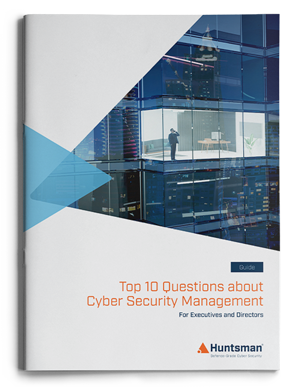The European Union formally adopted NIS2, the successor to the NIS directive, late 2022. NIS2 came into force in January 2023 and all EU states now have 21 months in which to enact national legalisation. They are required to establish the necessary rules, guidance standards and oversight regimes to improve the cyber resilience and incident response capabilities of public and private sector organisations across the EU.
The more things change…
There are a number of differences between the original NIS and this latest NIS2. They reflect a heightened sense of urgency caused by growing cyber attacks, more cases of ransomware disruption and the increase in the unpredictability of geopolitics across the globe.
Everyone welcome: An increased scope
Firstly, the definition of critical infrastructure – traditionally this meant power, water, gas, transportation, telecommunications, nuclear, airports/ports, healthcare etc. and NIS also included key providers of IT services.
Under NIS2, as in many other jurisdictions where the definition of critical infrastructure has expanded, the number of companies likely to be affected by a disruption caused by cyber-attacks has become broader. Digital service providers (as they were known under the NIS directive) are now categorised as “essential entities” under NIS2 and subject to the strictest requirements, by virtue of the critical role they play in a growing number of enterprises that are key to the operation of the economy – including, for example, cloud computing, telecommunications, managed services and trading platforms.
More stringent cyber security controls and safeguards
By definition, the range of cyber security provisions in NIS2 are, in places, somewhat vague and open to interpretation. The national laws to support the Directive are to be enacted by October 2024 and will provide further details. National Sector Regulators will play a role in defining what is appropriate for businesses operating in each of the service areas.
Article 21, paragraph 2 in the full text requires that organisations take appropriate measures to manage cyber risk, including:
- policies on risk analysis and information system security;
- incident handling;
- business continuity, such as backup management and disaster recovery, and crisis management;
- supply chain security, including security-related aspects concerning the relationships between each entity and its direct suppliers or service providers;
- security in network and information systems acquisition, development and maintenance, including vulnerability handling and disclosure;
- policies and procedures to assess the effectiveness of cybersecurity risk-management measures;
- basic cyber hygiene practices and cybersecurity training;
- policies and procedures regarding the use of cryptography and, where appropriate, encryption;
- human resources security, access control policies and asset management;
- the use of multi-factor authentication or continuous authentication solutions, secured voice, video and text communications and secured emergency communication systems within the entity, where appropriate.
Furthermore, the EU body ENISA will be tasked with creating standards and guidance where necessary.
Article 25 paragraphs 1 and 2 outline these national and central standard-setting roles:
In order to promote the convergent implementation of Article 21(1) and (2), Member States shall, without imposing or discriminating in favour of the use of a particular type of technology, encourage the use of European and international standards and technical specifications relevant to the security of network and information systems.
And:
ENISA, in cooperation with Member States, and, where appropriate, after consulting relevant stakeholders, shall draw up advice and guidelines regarding the technical areas to be considered in relation to paragraph 1 as well as regarding already existing standards, including national standards, which would allow for those areas to be covered.
For many businesses these controls will not be a surprise, in fact, it’s highly unlikely that any organisation these days is truly starting from scratch when it comes to cyber security controls. One could argue that to even have survived this long (whether covered by NIS previously or not) businesses must have had a selection of these controls in place. However, that’s where the next change to NIS2’s requirements come in …
More supervision and coordination
With the shift to NIS2 the level of regulatory requirements and oversight elevates considerably.
For one thing, significant incidents and breaches will be required to be notified within 24 hours, and updates must then follow within 72 hours, of first becoming aware of the incident. Secondly, there is scope for regulatory intervention in critical providers before breaches occur – either to ensure controls are in place or, potentially even, to intervene and shore up defences where there is a suspicion that current security efforts might not be adequate. This may not be dissimilar to arrangements brought into law by Australia for critical infrastructure providers in March 2022.
In view of the fact that many larger providers, and many digital/on-line businesses, operate trans-nationally, there is also a mechanism – EU-CyCLONe – that is planned to be able to coordinate the response to incidents across the whole of the EU, rather than being isolated to national levels or geographic siloes.
That’s all fine
Penalties are increasing. It seems that the success of the penalty regime for GDPR will be mirrored under NIS2 with the penalties structured to provide a greater incentive for businesses to comply with the requirements.
The sanctions can now be up to €10m or 2% of global turnover, for essential entities.
Finally, size matters
Say “critical infrastructure” and you immediately think of large companies. Power generation, water, transportation – the giants of industry that provide critical services to an economy and its citizens. Smaller business (in terms of premises, staff numbers or turnover), however, can also affect a range of citizen services. As such, the directive now applies to businesses of 50 employees and up and with a turnover beyond €10m.
The broader picture…
The NIS2 Directive only applies to the European Union Member States, although companies trading in the EU are likely to find themselves caught up in NIS2 obligations. Equally importantly, the new regulations align very closely to similar provisions now operating in many other jurisdictions.
- In Australia heightened geo-political tensions and an unsatisfactory record of cyber resilience in the sector prompted new legislation in 2022 to ensure the protection of critical infrastructure.
- In the UK, now outside the EU, regulations spawned by the original EU NIS directive are being reviewed. A consultation has just concluded (here) that will likely lead to similar changes for UK CNI providers.
- In the US the executive order in May 2022 was even more specific on the need for the industry to improve their cyber security and better protect this vital services sector.
So NIS2 isn’t alone, and businesses will find an increasingly universal need to both improve the in-house management of their cyber security controls; and be able to demonstrate their resilience levels to regulators either before a breach, and certainly, after one.
 About Huntsman
About Huntsman


